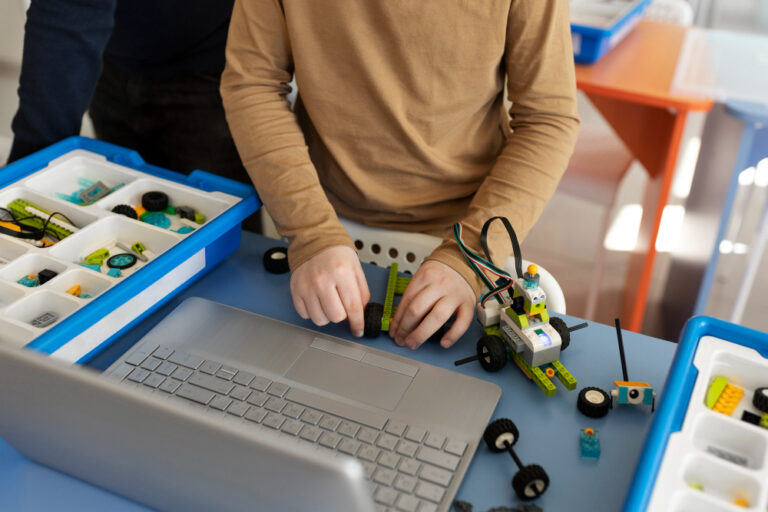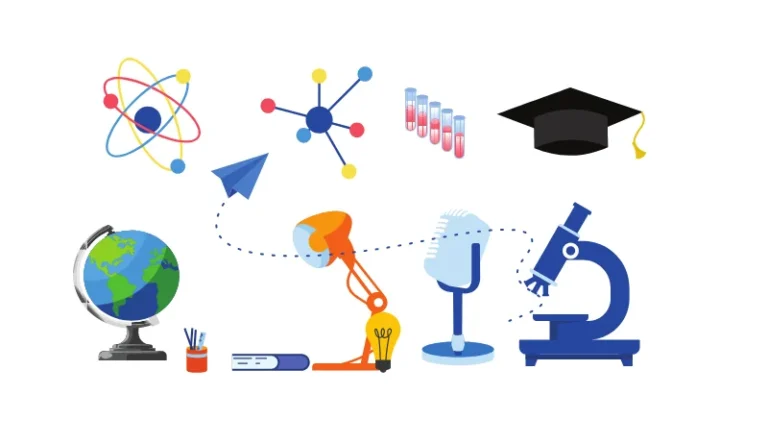STEM education combines all four disciplines, Science, Technology, Engineering, and Mathematics, which are collectively called STEM. The objective of combining all four interdisciplinary domains is to create a dynamic playground for students to equip them for their career goals.
STEM education surpasses traditional learning methods by revolutionizing it with knowledge and innovation. It provides students with real-world applications to help them in achieving their career goals. Let’s discuss the whys, hows, and wonders of STEM!
What is STEM Education?
STEM is a learning and growing approach where students can apply Science, Technology, Engineering, and Mathematics knowledge. It helps students to bridge the gap between academics and excellence by providing life-changing career opportunities. STEM games improve the analysis, creativity, and teamwork of students.
STEM education uses inquiry-based learning and hands-on activities. It challenges students to observe creatively and solve real-world problems. It uses technology, experiments, and projects to improve understanding of subjects. This initiative gives kids STEM knowledge, skills, and excitement.
Why Does STEM Education Matter?
STEM education matters for several crucial reasons:
21st-Century Skills
In the ever-evolving landscape of the 21st century, the demand for STEM skills has hit the stratosphere. STEM programs equip students with essential skills like critical thinking, problem-solving, teamwork, adaptability, creativity, and digital literacy, ensuring they are well-prepared for the modern job market.
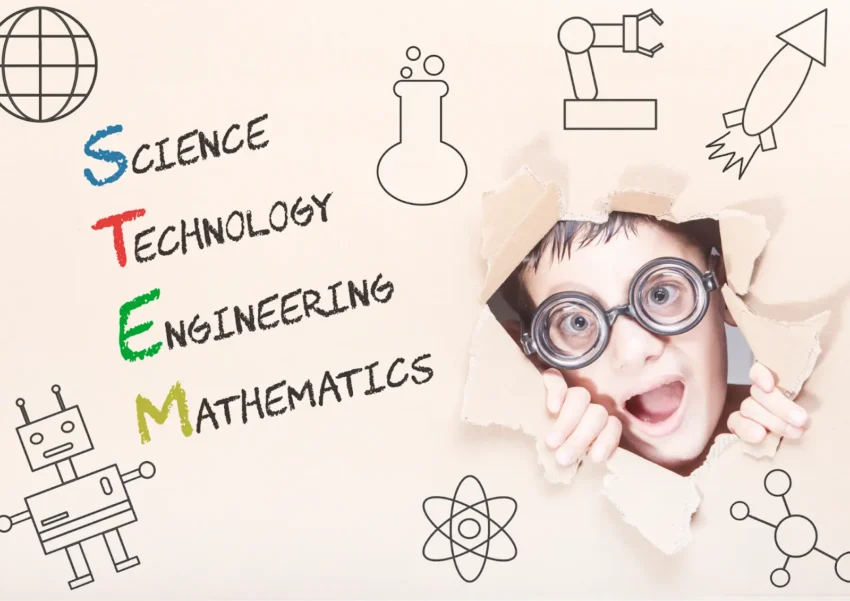
Bridge the Skills Gap
STEM education bridges student skills with job demand in the modern financial market. It’s the transformative element that empowers graduates, turning them into adept problem solvers, fully prepared to tackle any challenge in the professional world.
The Economic Impact
STEM education is more than just learning; it empowers individuals economically. A workforce with STEM skills is not just a fancy idea; it drives economic growth and technological advancements. Imagine a world where every graduate can use technology to create solutions and innovations that take us into an extraordinary future.
Career Opportunities
STEM education opens doors for infinite career opportunities. Whether it is engineering, computer science, data analysis, healthcare, or any other field, STEM graduates are in high demand across various industries that value innovation and problem-solving.
Real-World Applications
STEM education goes beyond textbooks, emphasizing real-world applications. Students engage in hands-on activities from robotics to environmental science that bring theoretical knowledge to life.
The Pillars of STEM Education
The Pillars of STEM Education are essential components that contribute to the holistic development of students in science, technology, engineering, and mathematics. These pillars include:
Science Education Reimagined
STEM education redefines the learning experience by incorporating excitement in Science subjects. It goes beyond traditional approaches, featuring interactive experiments and mind-bending demonstrations.
Unlock the Power of Technology
STEM education has a significant impact on redefining technology to empower students and drive innovation. It encourages the use of digital tools, coding, and computational thinking to solve problems and explore new possibilities.
Engineering Excellence
Engineering, the unsung hero of STEM. It’s not just about building bridges (although that’s pretty important). It’s about developing engineering skills and mindsets like creative thinking, resilience, and teamwork. STEM’s engineering arm teaches problem-solving at its finest. Like:
- Students tackling real-world problems.
- Engineering solutions
- Emerging as the architects of a better tomorrow
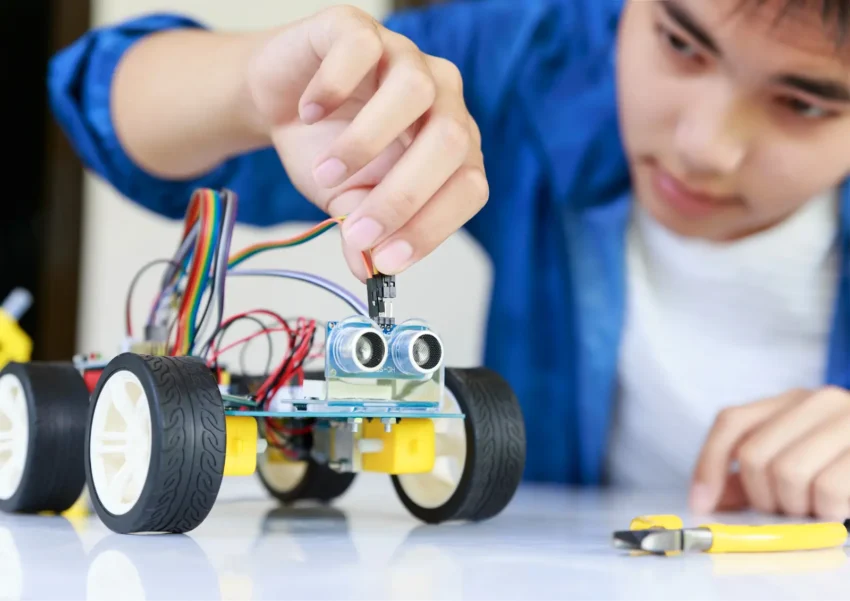
Mathematics Mastery
STEM takes maths from the dreaded subject to the exciting adventure of logical reasoning and analytical thinking. It’s the Sherlock Holmes of education, solving mysteries and uncovering the secrets hidden within numbers.
How is STEM Different from Traditional Education?
STEM education differs significantly from traditional education:
Depth of Topics
STEM education provides in-depth coverage of science, technology, engineering, and math. It Offers more comprehensive information compared to traditional learning methods.
Learning Methodology
STEM emphasizes practical, hands-on learning. It differs from traditional memorization and reading approaches as it encourages active engagement and application of knowledge.
Real-world Application
STEM ensures students work on real-world applications; it Aims to minimize gaps in understanding topics.
Teaching Perspective
STEM education is viewed from both the students’ perspective in school and the broader context involving parents and teachers. It Promotes a collaborative educational environment.
Approach to Learning
STEM learning focuses on how subjects are taught; it emphasizes critical thinking and problem-solving skills. This contrasts with traditional education, which often prioritizes rote memorization for exams.
Importance of STEM Education in Shaping a Better Future
STEM education integrates rigorous academic concepts with real-world lessons. It allows students to explore their creativity in solving problems across various disciplines.
STEM professionals are transforming the future through innovations in health and medical science, space research, and technology.
In the last three decades, a 79 percent increase in employment in STEM occupations has been observed. The U.S. Bureau of Labor Statistics cited that from 2022 to 2032, jobs in STEM professions will grow to 10.8% compared to 2.3% in other occupations.
Employment in mathematical occupations is expected to increase by 28.3% from 2014 to 2024, according to a report on STEM occupations.
To follow the rapid pace of technological innovation, students must adopt STEM careers. STEM education boosts employment, which promotes a nation’s economy.
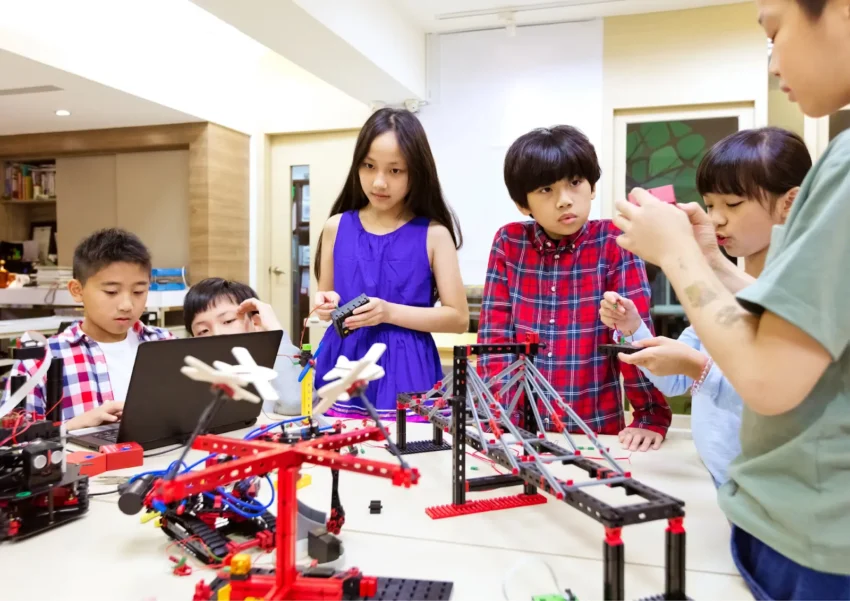
Amplify Learning through STEM Education
STEM education has emerged as a powerful tool in the education domain, amplifying learning experiences for students. Interactive and hands-on STEM offers numerous benefits that go beyond traditional teaching methods. To understand how STEM improves education, understand these points:
- STEM learning is fun and interactive with STEM games. Gamification makes learning fun by helping students solve problems, think critically, and make decisions.
- Students interact, communicate, and have fun in STEM groups. Communication, task delegation, and collaboration are learned as students overcome obstacles and attain goals.
- Students utilize classroom information in STEM games that imitate real-world problems. STEM courses are more exciting and memorable when students apply their knowledge.
- STEM educational games allow kids to try new things and find what works. Trials and errors teach critical thinking, perspective-taking, and strategy-adjusting. STEM learners are more resilient and ambitious.
What makes a good STEM Education?
A Good STEM education equips students for 21st-century challenges and opportunities. It has the following characteristics:
- Emphasise real-world problems: STEM Education addresses relevant and meaningful real-world issues for students and society.
- Student-centered, inquiry-based learning: It is student-centered and inquiry-based learning that allows students to choose their knowledge, interests, and pace.
- Collaborative and Cooperative Learning: It is a collaborative and cooperative learning environment that requires students to work in teams, share ideas, give and receive feedback, and respect diverse perspectives.
- Interdisciplinary and Integrative Approach: It is an interdisciplinary and integrative approach that connects concepts and skills from different STEM disciplines and other subjects, such as arts, humanities, and languages.
- Adaptive and Flexible Education: It is adaptive and flexible education that addresses the changing needs and demands of students, teachers, and society.
- Engage and Motivate Students: STEM Education engages, motivates, and sparks students’ curiosity, interest, and passion for learning. It inspires them to pursue STEM careers and lifelong progress.
- Guided by the Engineering Design Process: It is guided by the engineering design process, which involves defining problems, conducting background research, and developing multiple ideas for solutions.
Common Misconceptions about STEM Education
Some common misconceptions about STEM education are:
- STEM is not just for boys: Encourage girls to pursue STEM interests and challenge gender stereotypes.
- It is not only for “geniuses”: Anyone can develop skills and succeed in STEM with practice and perseverance.
- STEM only includes engineering and technology, which needs to be corrected, as well as maths and science included in it.
- STEM occupations need maths skills, but it’s not like that. STEM disciplines need several abilities beyond arithmetic.
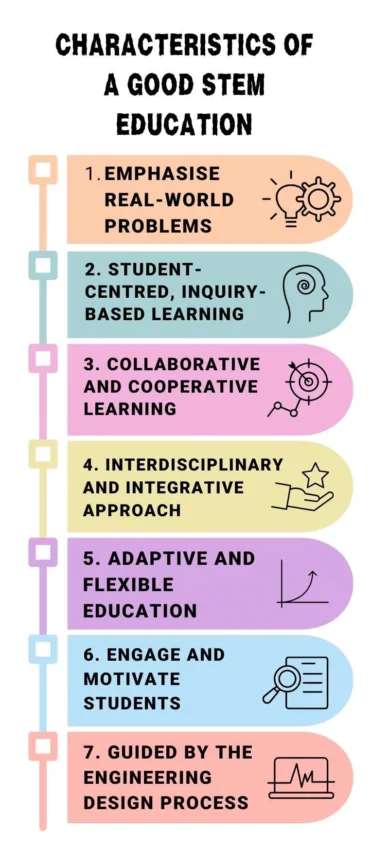
Why is early exposure to STEM important?
Early exposure to STEM education in kids offers several benefits:
Confidence Boost
Early exposure to STEM education boosts enthusiasm and self-assurance in STEM fields. Improves the cognitive abilities of kids, including memory and spatial awareness, as they grow up.
Critical Foundation
STEM exposure in early childhood lays a crucial foundation for later educational outcomes. Taking this seriously boosts kids’ chances to grow and succeed now and in the future.
Academic Success
Early STEM learning enhances children’s preparedness for technology-focused professions.
Basis for Future Learning
Early STEM experiences enhance children’s self-belief in learning science. By setting a strong academic foundation, they can do better in the future.
Quick Recap
— STEM Education Revolutionizes learning by merging Science, Technology, Engineering, and Mathematics.
— Creates a dynamic platform for students to develop real-world skills.
— Engages learners through inquiry-based and hands-on activities to boost creativity, critical thinking, and teamwork.
— Bridges the skills gap, driving economic growth and providing diverse career opportunities.
— Emphasizes real-world applications, going beyond textbooks.
— Pillars involve redefining science education, unlocking the power of technology, promoting engineering excellence, and mastering mathematics.
— Differs from traditional education by providing an innovative and scientific learning environment, starting from primary education and focusing on practical applications.
— Plays a vital role in making a better future by integrating academic concepts with real-world lessons, fueling innovation, and addressing the increasing demand for STEM professionals.
— Characteristics of good STEM education include student-centered inquiry-based learning, collaborative environments, interdisciplinary approaches, and guidance by the engineering design process.
— Debunks stereotypes, emphasizing STEM is for everyone and requires a range of skills beyond arithmetic.
— Early exposure to STEM is crucial for boosting confidence and cognitive abilities and laying the foundation for academic success and future careers in technology.




